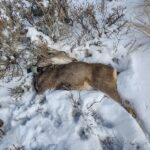Issue 14 will explore conserving and managing wildlife in large landscapes around the world, with implications for the Greater Yellowstone Ecosystem.
In every corner of the world, large ecosystems fostering diverse wildlife and complex species interactions sprawl over jurisdictional boundaries. They provide ecological wonders and societal benefits, but also present considerable management challenges and potential for conflict. While acknowledging that each landscape—and the toolkit for managing it—is shaped by a unique historical, social, political, administrative, legal, economic, and biophysical context, this issue of Western Confluence will focus on opportunities for reciprocal learning around common challenges faced by the world’s most iconic ecosystems. The issue will ask:
- How do we conserve and protect large landscapes in the context of change—from climate change, land conversion, invasive species, and biodiversity loss, to shifting social values, political and legal frameworks, and economic development?
- How can recognizing and upholding the culture, knowledge, and rights of Indigenous peoples and local communities globally improve collaborative wildlife conservation and management?
- What innovative and successful approaches, policies, and strategies—as well as lessons from past failures—can help communities manage human-wildlife conflict?
- How do we best collaborate across disciplines and with diverse stakeholders in large landscapes that traverse political and jurisdictional boundaries?
As a publication based in the Mountain West, we are interested in stories from around the world that can inform and improve wildlife management in the Greater Yellowstone Ecosystem, as well as stories from Yellowstone that may inform wildlife management in other places.
Stories will be released monthly online throughout 2024 and in a print edition in early 2025.


